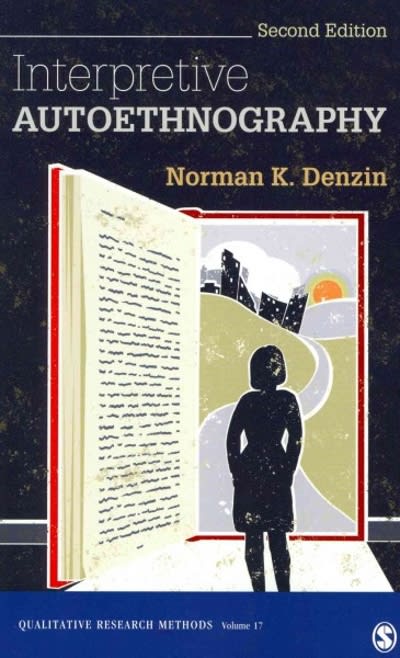Question
Needing help to form a brief summary based on below information please This research aims to investigate if increasing music tempo influences distraction while reading,
Needing help to form a brief summary based on below information please
This research aims to investigate if increasing music tempo influences distraction while reading, while also investigating whether working memory ability is related to distraction while reading under difference circumstances. For the first aim, mean differences across the four conditions (i.e., silence, low tempo, moderate tempo, and high tempo) for the dependent variables 'self-reported distraction' and 'quiz score' will be examined. For the second aim, correlations between the two dependent variables and working memory score will be examined.
RELEVANT POINTS:
It is commonly stated in the research literature that listening to music is not ideal when performing tasks which are cognitively demanding (Cheah et al. 2022; Vasilev et al., 2018), due to the additional cognitive demand cognitive demand required to process the additional stimuli (Paas & Van Merrienboer, 2020). - Despite literature suggesting that music can be distracting, survey research has shown that some individuals still often listen to music while they read (Goltz & Sadakata, 2021; Kiss & Linnell, 2023). - Research into the physiological impact of music has demonstrated that music with a faster tempo increases arousal to a greater extent than music with a slower tempo (Rickard, 2004; White & Rickard, 2016). This increase in arousal may improve cognitive performance, as it allows an individual to reach a desired state of alertness for performing cognitive demanding tasks (Franceschini et al. 2020). - Lange et al. (2018) who found that music with a faster tempo led to faster reading time. In contrast, Moreno and Woodruff (2023) found that the faster the music tempo the poorer the performance in reading comprehension. - Some research has demonstrated that higher working memory capacity is associated with better ability to focus when distractions are present, as it helps individuals manage competing stimuli (Beaman, 2004; Christopher & Shelton, 2017; Robison & Unsworth, 2015). It could be that those with a higher working memory capacity are still able to listen to music while they read, without incurring any detrimental effects.
Procedure The data collection comprised of two phases. In phase 1, participants completed a working memory task online via the software Inquisit. The specific working memory task used is the automated operation span task (OSPAN) (Unsworth et al., 2005). This task uses a combination of simple maths problems and presentation of letter strings to obtain a single overall working memory score. In phase 2, participants had four readings with an associated 15-item quiz. 10 minutes were provided to do the reading, and an additional 10 minutes to do the quiz. The readings consisted of portions of text from the lecture summary readings that are part of the PSY2204 unit. There were four different music conditions participants were exposed to across the four readings: Silence (no music), low-tempo music, mid-tempo music, and high-tempo music. The music played during the entire 10-minute period allocated to do the reading. After completing the reading (and just prior to do the quiz), participants were asked 'please select how the music that was played impacted your distraction' rated on a 5-point scale of (1) strongly reduced (2) slightly reduced (3) did not impact (4) slightly increased (5) strongly increased. The presentation order of the four different readings, and the music condition, was fully randomised across all participants. Results The means and standard deviations for the quiz scores and self-reported distraction scores are provided in Table 1. A one-way repeated measures ANOVA was conducted on the quiz scores, with no significant effect of music condition, F(3,300) = 1.46, p= .24. A one-way repeated measures ANOVA was conducted on the self-reported distraction scores, with an overall significant effect of music condition revealed, F(2,198) = 23.91, p < .001, partial eta squared = .20. Follow up paired samples t-tests revealed a pattern of results where the high-tempo condition was on average reported to produce the significantly highest level of distraction compared to both the mid-tempo condition (t(100) = 4.20, p < .001, d = 1.43) and the low-tempo condition (t(100) = 7.11, p < .001, d = 1.28). The mid-tempo condition on average produced significantly more distraction than the low- tempo condition (t(100) = 7.11, p = .006, d = 1.32). All these Cohen's d effect sizes are large effects based on Cohen's (1988) guidelines for interpretation. Of the 101 participants, 39 had OSPAN working memory scores from phase 1 that were able to be matched to their phase 2 data. Based on this sub-sample of 39 participants, Pearson correlations were calculated between the working memory score and the quiz score and distraction score variables, for a total of seven correlation values. All correlations were of negligible magnitude (i.e., all less than .23) and were not statistically significant.
Table 1. Means and standard deviations (SD in brackets) for the quiz score and distraction score variables across the music conditions (n = 101).
Condition Quiz score Distraction score Silence 8.70 (3.08) Not applicable Low-tempo 8.64 (2.21) 3.26 (1.09) Mid-tempo 8.90 (2.74) 3.57 (1.09) High-tempo 8.25 (2.74) 4.17 (1.13)
Cohen, J. (1988). Statistical Power Analysis for the Behavioral Sciences (2nd ed.). Hillsdale, NJ: Lawrence Erlbaum Associates, Publishers.
Unsworth, N., Heitz, R. P., Schrock, J. C., & Engle, R. W. (2005). An automated version of the operation span task. Behavior research methods, 37(3), 498-505. https://doi.org/10.3758/BF03192720
Step by Step Solution
There are 3 Steps involved in it
Step: 1

Get Instant Access to Expert-Tailored Solutions
See step-by-step solutions with expert insights and AI powered tools for academic success
Step: 2

Step: 3

Ace Your Homework with AI
Get the answers you need in no time with our AI-driven, step-by-step assistance
Get Started


